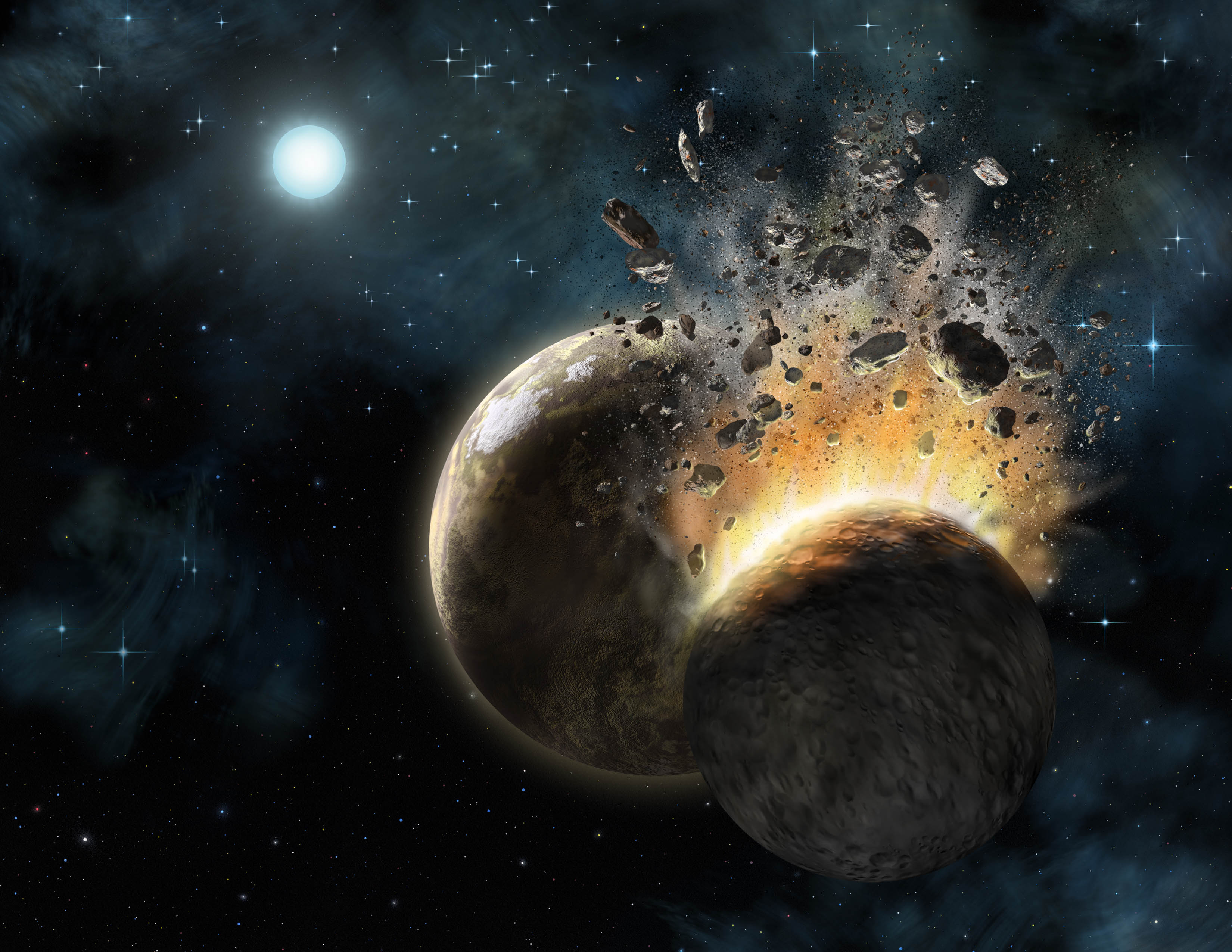UCLA astronomers’ discovery gives insight to Earth, planetary formation

An artist’s rendering of the inner planetary system of HD 131488, a star 500 light years away from Earth in the direction of the constellation Centaurus, as two large rocky bodies collide.
By Derrick Oliver
Jan. 13, 2010 10:10 p.m.
UCLA astronomers, with the help of the Gemini South telescope in Chile, have recently discovered space dust and debris composed of particles that are unlike any known planetary building blocks found in our own solar system.
Warm dust was found around possible rocky planet formations that surround HD 131488, a star 500 light-years away from Earth in the direction of the constellation Centaurus.
The dusty material in which planets grow is typically made out of silicate material, which is silicon with oxygen, iron or other abundant elements found on Earth, said Dr. Benjamin Zuckerman, UCLA professor of physics and astronomy and coauthor of the as-of-yet unpublished study.
One of the main hopes in this area of study is to possibly find a planet or a number of planets similar to Earth that may have the possibility of sustaining life, said Dr. Joseph Rhee, a coauthor of the study and a former UCLA postdoctoral researcher in physics and astronomy who is now employed by the University of Georgia.
“Eventually if we find Earth-like planets, we may analyze life and any signature of life,” Rhee said. “Maybe some organic forms exist that may lead to life forms we may know. It opens up a whole new world.”
The warm dust that surrounds HD 131488 is located in an area called the terrestrial planet zone, a distance similar to that between the Earth and our sun. This dust is “warm” because the star heats the dust to temperatures comparable to those found on Earth.
Astronomers believe collisions between rocky planet formations may possibly be occurring, thus causing the large amount of warm dust detected around the star. The warm dust and debris provide evidence of the presence of planetary bodies around the star that are composed of this dust.
However, astronomers are not only intrigued by the unidentified composition of the warm dust, but also by the presence of cooler dust 45 times further away from HD 131488. The cold dust is unlikely to have been a result of planetary collisions but of remnants of planetary formation further away from the star instead.
“There are very few or no other stars that we know of that show cold and warm dust,” Zuckerman said. “It is a very active system going (both) near the star and far away from the star.”
The recent findings were part of a study headed by Carl Melis, a former UCLA graduate student, and were associated with his graduate thesis entitled, “The Life, Death, and Composition of Exoterrestrial Planets Around Intermediate Mass Stars.” Initially, Melis was drawn to the topic out of an interest in how terrestrial planets, like Earth, form around stars.
“In terms of astronomers, the main goals of (this) research outside of our own planet system, is to find our place, understand how the Earth fits into the framework of the universe, stars and planetary system,” Melis said. “We are trying to understand what the time line is like for the formation of an Earthlike planet, and when events, like a catastrophic event, occur, how they form Earth-like planets.”
Because the composition of the dust is different from anything found in our solar system, Melis said he thinks that human understanding of gross formation of Earth and planets is not necessarily complete.
Melis based his research on observations and archival data collected by the Infrared Astronomical Satellite and began a follow-up study of these results in 2007.
“(This satellite) originally detected a signature of dust,” Melis said. “The observations dated back from the mid-1980s, and upon recognizing this archival data, we followed up with these observations in Chile and confirmed there was dust.”
Dust or possible planetary bodies around a star are discovered by comparing the relative infrared radiation and visible light of a star. Dust particles or planetary bodies near a star absorb visible light emitted from the star, convert the energy into infrared radiation, or heat, and then re-emits this infrared radiation.
“If there is more heat energy than there should be, and if the star is just sitting by itself, you can deduce this extra heat energy must come from dust particles or planets around the star,” Zuckerman said.
The implications of these findings are yet to be determined. Melis and his colleagues will continue the research to try and identify the components of the dust and to locate other stars with rocky planet formation.


